 There are 17 so-called autonomous communities* in Spain (what we would call states or provinces or counties), which were formally created in 1978 by the Constitution of Spain after Franco’s 40-year regime ended with his death and Spain returned soon after to democracy. Some are more independent minded, e.g., the Basque, Cataluña, Galicia (which all have significant nationalist aspirations) and all have varying levels of self-government. Four border el Mar Cantábrico in the north of Spain, namely from the French border to the Atlantic Ocean, País Vasco, Cantabria, Asturias, and Galicia.
There are 17 so-called autonomous communities* in Spain (what we would call states or provinces or counties), which were formally created in 1978 by the Constitution of Spain after Franco’s 40-year regime ended with his death and Spain returned soon after to democracy. Some are more independent minded, e.g., the Basque, Cataluña, Galicia (which all have significant nationalist aspirations) and all have varying levels of self-government. Four border el Mar Cantábrico in the north of Spain, namely from the French border to the Atlantic Ocean, País Vasco, Cantabria, Asturias, and Galicia.
Pronunciation ASIDE (V and stress) A few points of order: the V is sounded as a B in Spanish, hence ‘Vasco’ is sounded as ‘Basco.’ Furthermore, all letters are pronounced (making Spanish easier than French for English speakers) and thus ‘País is ‘Pie-ees’ with the stress on the second syllable. By default, without an explicit stress mark (here over the i, í), the stress would be on the first syllable as is typical with most two-syllable Spanish words.
Unlike the Costa del Sol in the south where temperatures routinely hit the 40s in summer and where most of Spain’s 60 billion annual tourists flock, the Costa Cantábrica is less developed and less touristy, the temperatures more bearable, and the scenery more rugged (the so-called Green Coast or Costa Verde is entirely in Asturias, from Llanes east of Gijón to Castropol on the Galician border).
Tourist access from abroad is easy with main airports in Bilbao, Santander, Oviedo, Santiago de Compostela, La Coruña, and Vigo, and is already serviced in part by existing tourist routes along the famed “Camino de Santiago” (more about The Way of St. James later).
The main cities are all connected by the Autovia del Cantábrico, roughly 600 km from San Sebastián on the French border to La Coruña on the Atlantic (aka the AP-8 in País Vasco and the E-70 in Galicia). An ideal trip would be to fly into San Sebastián and drive to La Coruña via Bilbao, Santander, and Gijón, stopping whenever along the way. The Cantabrican autovia or autopista is a first-rate national road most of the way (i.e., two separated two-lane highways) with sweeping views and long viaductos through scenic sierras and across sloping valleys. Work continues on three unfinished stretches (in Llanes, Luarca, and Mondoñedo), otherwise the drive is uninterrupted.
There are numerous inlets, beaches (the best that I’ve seen so far in Asturias are in Ribadesella and Llanes), and other points of interest, not least of which are the Frank Geary-designed Guggenheim Museum (in Bilbao), El Palacio de la Magdalena (or royal summer palace in Santander), Los Picos de Europa (a mini Alps bordering Cantabria and Asturias), Covadonga where the Christian Reconquista of Spain began in 722 (in Asturias), Santiago de Compostela (including the conchal Peter Eisenman-designed Cidade da Cultura), and the Torre of Hércules, the oldest functional lighthouse in the world (in Galicia).
So, why do we call the large body of water north of Spain the Bay of Biscay, especially since no one in Spain does? The name is an outdated misnomer, referring to an old provincial term in País Vasco, where there are three traditional provincial names: Alava, Guipuzcoa, and Vizcaya. Biscay comes from Vizcaya. I suppose, Cantábrico is a little better since it at least refers to Cantabria, one of the four bordering autonomous communities, but I think the Autovia del Cantábrico says it best. The sweeping views of the sea are not to be missed on any northern adventure in Spain.

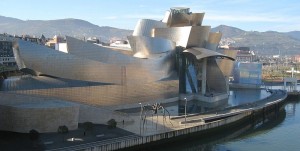
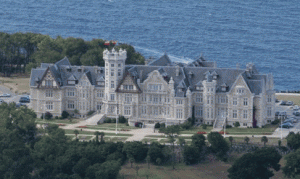
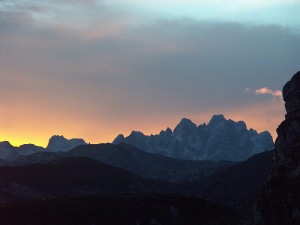
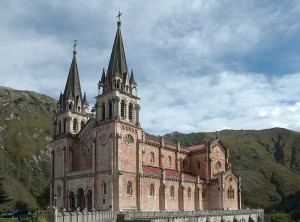
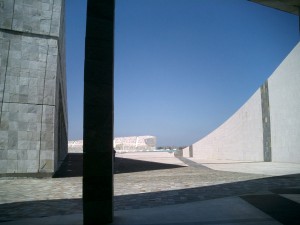
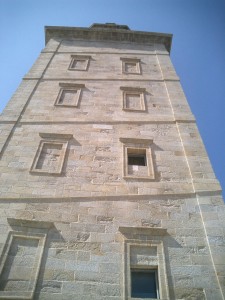

¡Muy practico! Aplastantes argumentos. Manten este nivel es un post estupendo. Tengo que leer màs posts como este.
Saludos
Muchas gracias. Tu casa en La Rioja parece muy bonita. Espero que los otros posts sean tambien interesantes. Vuelve.
Ciao
Today, I went to the beach with my children. I found a sea shell and gave it to my 4 year
old daughter and said “You can hear the ocean if you put this to your ear.” She put the shell to her
ear and screamed. There was a hermit crab inside and it pinched her ear.
She never wants to go back! LoL I know this is entirely off topic but I had
to tell someone!
Love the spam and not off topic at all — your computer must have AI or machine language learning. Scary what computers can do these days, not to mention caracolas. I hope your daughter gets over it. LoL. The sea is a wonderful place to grow up by. Enjoy
Excellent post johnkwhite. I like the your pronunciation ASIDE notes. Very Helpful.